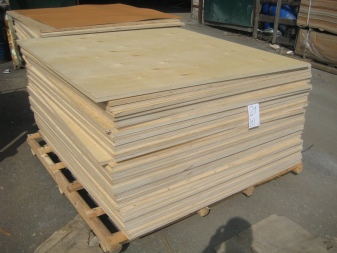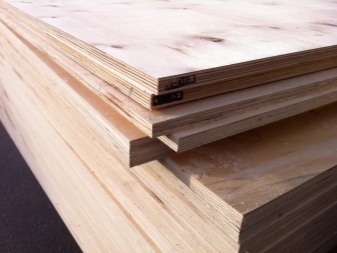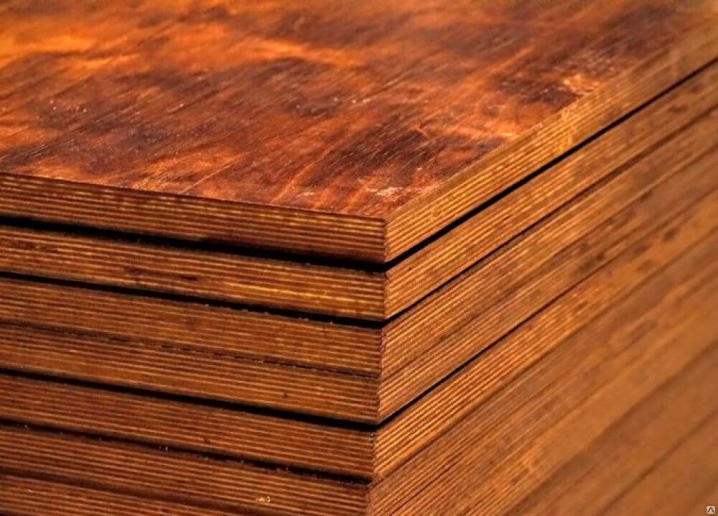What sizes are plywood?

Plywood is a wood board or sheet, in which several thin veneer sheets are connected with the help of an adhesive base. This widespread woodworking product is the most demanded and inexpensive modern environmentally friendly material. Plywood in sheets is produced in various sizes and thickness. It can be applied, depending on its properties, both for domestic purposes and for industrial purposes. To reduce the amount of waste during the execution of work, the wood material is selected exactly according to the size, focusing on the existing needs. Modern woodworking industries produce sheet plywood of various brands and varieties. You can buy them at specialized retail outlets.


Main dimensions
The veneered layers from which the plywood is made are bonded with various adhesives and cured under a press until they are fully adhered. Lay these layers on top of each other so that the direction of the wood fibers in the previous layer does not coincide with the direction of the next layer. This method improves the strength of the material to bending and other mechanical damage. The minimum number of veneered layers in a plywood sheet is made at least 3 - in this case, the size of the sheet thickness is marked as 3 mm. The largest number of them is 21 sheets, but the thickness of the finished material can be in the range of 30-40 mm.

The exact dimensions and quality of plywood processing are regulated by the requirements of the state standard, but these requirements are different, because there is no single GOST for plywood sheet, and the parameters of different manufacturers may be different.
The dimensions of plywood may differ in width and length, each of these parameters is measured in millimeters. According to their size range, plywood sheets can be large, for example, 2000x3000 or 2000x3500 mm, and small, for example, squares 1220x1220 mm. The indicator of the standard size of the thickness of the material directly depends on the number of veneered sheets glued together. The thicker the plate or sheet, the stronger this material is.


Standard
Small errors in the dimensional parameters of the plywood sheet are also regulated by the state standard. GOST, adopted in our country, allows the manufacture of these woodworking products in any size, at the request of the consumer.

The most common dimensions for plywood are 1220 and 1525 mm. The length of the product can be limited to 1525 or 2440 mm. Such parameters are in demand among consumers, since they are easier to use during operation, and they can be transported by low-tonnage vehicles. Plywood materials with large format or non-standard parameters are 3500 or 3660 mm long and 1500 or 1525 mm wide. Sheet materials with a similar cut are often used for finishing work when decorating large premises or for production needs.

Non-standard
Small format wood panels are also popular. On sale you can see products with the following dimensions: 1220 by 1220, 1220 by 1525 or 1525 by 1525 mm. This minimal cutting is convenient in that 1 person can handle a sheet of plywood without the involvement of third-party assistants. On the other hand, cladding with such sheets results in too many joint seams, which sometimes is not a good solution.

In certain cases, it is more convenient and more profitable to use plywood sheet materials with a much larger format.
With a large format, sheets are most often in demand, the sizes of which are: 1525x1830, 1220x2440, 2500x1250, 1500x3000 or 1525x3050 mm. Such product parameters are not found in every manufacturer - someone produces only a part of the listed formats or is guided by their own dimensional standards.

If we start from the standards of GOST, adopted in 1975, then the dimensions of the sheet material are as follows:
- the length of the sheet is made from 1000 to 1525 mm, the interval of increasing the dimension is 25 mm;
- the width of the sheet is made from 800 to 1525 mm, the interval of increasing the dimension is also 25 mm.
Due to the fact that plywood is not subject to particularly precise requirements for compliance with dimensions, typical values may deviate from the requirements of the standard up to 0.5-4 mm in length and width, and by 0.5 mm in thickness.

Possible thickness
For pressed plywood, the thickness can reach at least 1 mm - this type of material is called peeled. On sale you can find sheets of 3 mm, 4 mm, 6 mm, 8 mm, 9 mm, 10 mm, 12 mm, 15 mm, 18 mm, 20 mm and so on. If necessary, woodworking factories make plywood even 40 mm thick, but it is rarely found on sale, since it is made in batches to order.
The most common sizes in thickness range from 6 to 27 mm.

Depending on the thickness, plywood has its own application.
- Sheet plywood 3 mm thickness was previously used in aircraft construction, therefore it is still called aviation. Today, such products are used in modeling, since the material can be easily bent, glued, fastened together sheets - all this allows you to design unique crafts and breadboard models from plywood. The dimensions of such plywood can be 1525 by 1525 mm or 1525 by 1830 mm. This material is sold in multiples of packs, 130 sheets each. The weight of a pack depends on the dimensions of the sheet and the relative humidity of the material.

- Sheets 4 mm thick used not only for wall and floor cladding, but also in furniture production. The most popular size is 1252 by 1525 mm.

- Construction plywood with a thickness of 6-6.5 mm has 5 veneer layers. It is used for finishing works and when assembling furniture products. The most demanded sizes are 1525 by 1525 mm, 1220 by 2440 mm, 1500 by 3000 mm.

- Multi-layer plywood with a thickness of 8-10 mm, also used in construction and furniture production. This is a fairly durable material that can be used for finishing the floor - plywood can withstand heavy loads, even if it is laid in just 1 layer. The most demanded sizes are 1525 by 1525 mm, 1500 by 3000 mm, 1220 by 2440 mm.

- Slab 12-15 mm thick - Plywood sheets, the thickness of which starts at 12 mm, are called slabs. In the composition of such a board, in a glued state, there are from 9 or more layers of veneer. Such plates are used for the manufacture of racks, shelves, cabinets, partitions, and so on. It is a durable material that can withstand heavy loads.

- Plates with a thickness of 18-30 mm - consist of peeled veneer sheets glued together. With the help of this plywood, they equip the floor area between the floors, perform the formwork of the strip foundation, make gazebos, summer constructions, garden furniture and much more.

- Plates 35-40 mm thick are produced for furniture production. They are used for the manufacture of wooden stairs, various pallets, countertops. Sizes can be 1550 by 2440 mm, 1500 by 3000 mm, 1525 by 3000 mm.

Any plywood sheet according to accepted state standards may have slight deviations in dimensions and thickness, measured in millimeters.
Visually, such a deviation is almost imperceptible, but with accurate measurements it can be detected.
The minimum deviation in the size of the plywood sheet is in the range of 0.3-1 mm, and the maximum can reach up to 1.7 mm.

How to choose?
When building a house, plywood is most often used, consisting of 3-5 layers of glued veneer. The veneer layers can be located in the sheet material in different ways, they are evaluated according to the outer layers of the sheet. If the wood grains are located in the direction of the length of the sheet, then such plywood is called longitudinal. If the fibers are located in the direction of the sheet width, then such plywood is considered to be transverse. Longitudinal sheet plywood is used wherever high flexibility of the sheet is required when performing work.Cross plywood is used when good bending stiffness is required.

Due to the impregnation of the layers with glue, plywood sheets are highly resistant to moisture and water. Several brands are most common.
- FC - is a moisture resistant sheet, the veneer inside which is impregnated with glue, consisting of a mixture of resin and formaldehyde. If plywood has an E1 impregnation class, it means that the degree of emission of formaldehyde vapors into the external environment is low, and such material can be used in residential premises.

- FSF - plywood is impregnated not only with glue, but also with water-repellent composition. This material is suitable for outdoor work.

- FSF-TV - plywood has water-repellent and fire-resistant impregnations. This material is used for external and internal work.

- BS - refers to aircraft plywood, used for modeling. Plywood of this type can be resistant to some chemical components.

- FB - has a strong adhesive base and a special impregnation, thanks to which the plywood does not swell even in water.

- FBA - used for interior decoration and furniture manufacturing. This sheet material does not emit formaldehyde vapors, therefore it does not pose a danger to human health.

- Laminated plywood - has a durable protective layer in the form of a film, which makes this material completely resistant to high humidity.

Finished pressed plywood sheets are sanded.
This procedure is carried out in the same woodworking industry, where veneer sheets are glued.
There are two types of plywood products.
- Sanded - if only one side of the sheet is sanded, then the Sh1 code is added to the nomenclature of the plywood grade. If both sides are ground, then the products are marked with the Sh2 code.

- Unpolished - if the plywood sheet has not been sanded, then the NSh code can be seen in its nomenclature.

Plywood, sanded on both sides, is used for the production of furniture products. If you choose a material for construction work, then it makes no sense to overpay for sanded sheets - you can get by with a cheaper unpolished option.
Plywood sheets are divided into 5 grades. The best grade is marked with the letter E, which denotes an elite and high quality product. Then, as they deteriorate, the varieties are divided into I, II, III and IV. The grade is determined by the appearance and quality of the front sides of the material. Each side is evaluated separately, and the result in the nomenclature is written with a fraction sign. For example, plywood marked I / II will indicate that one side of this material corresponds to I grade, and the other side of the sheet is only of II grade quality.

To correctly determine the amount of material required for work, you need to make preliminary calculations before buying:
- determine the area of the plywood sheet;
- calculate the area of the working surface;
- divide the area of the working surface by the area of the plywood sheet, round the result up to whole numbers.
When buying material, you need to take a small stock, which will be needed in the event of an incorrect cut.

Experienced experts recommend considering the following important nuances when buying plywood material:
- determine the purpose of plywood and select the appropriate grade of material for this purpose, as well as take into account the composition of the adhesive base;
- check with the seller what material the plywood sheets are made of - birch and pine wood are considered the most suitable for indoor and outdoor work;
- pay attention to the quality of the surface of the sheet - there should be no chips, bubbles and foreign inclusions on it.

For the manufacture of furniture products, plywood sheets are used, the thickness of which does not exceed 9-10 mm, while for construction purposes they take material with a thickness of at least 12 mm. Finishing works are performed with sanded plywood of grade E or category I with obligatory sanding of the outer side. For other works, the appropriate class of material is also individually selected and the need for grinding is determined. The cost of a plywood sheet directly depends on its grade, size and thickness. The larger the dimensions of the sheet and its thickness, the more expensive the material is.
Which plywood is better, see below.













The comment was sent successfully.